Apr 13, 2025
Apr 13, 2025

The landscape undergoes a dramatic transformation within a few hours of driving through the Sonoran Desert dotted with cacti to the Red Rocks of Sedona. Once you exit interstate I-17 and follow SR 176 north, it brings you into the Visitor’s Center which offers a glimpse into the geology and archaeology of the stunning red rock formations and the early settlers who adapted themselves to this region. Artifacts including Jewelry, Pottery and Clovis from the Paleolithic era, convey a deep sense of lifestyles several thousands of years ago. We stop at Tlequepaqueh, (Tla-keh-pah-keh) Arts & Crafts Village, dotted with quaint artisan shops nestled under giant sycamore trees and spectacular water fountains in the midst of a courtyard. Lined with cobblestone walkways, beautiful arches, flowering gardens and classic stucco architecture, this hamlet is reminiscent of a Spanish village.
Sunsets in Sedona are a truly magical experience as you watch from a vantage point, the sunlight illuminate the magnificent red rocks revealing its beauty. Driving on the winding roads through Oak Creek Canyon on Rt 89A towards Flagstaff, it is absolutely scenic and picturesque, where tall Ponderosa pines in Coconino National Forest rise up to touch the skies. All at once, we see snow capped mountains in early June standing tall and graceful in the midst of this panoramic backdrop. These are the San Francisco Peaks on which pockets of snow glisten in the sunshine.
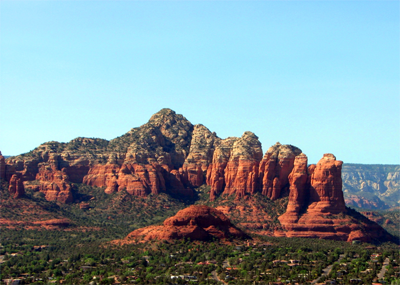 Driving further for another hour or so, we approach the South Rim of the national park to witness the grandest spectacle of them all- the Grand Canyon. Mere words are not enough to describe this wonder of wonders and much has been written about it through the decades since they were first deemed a national treasure back in the early part of the 20th century. While hiking is the best way to enjoy the canyon, the shuttle services in the park are very well inter-connected and each and every stop, with names such as the Hopi Point, Maricopa Point and Hermit’s Rest, offers incredible panoramic views of the Canyon and a glimpse of the Colorado river.
Driving further for another hour or so, we approach the South Rim of the national park to witness the grandest spectacle of them all- the Grand Canyon. Mere words are not enough to describe this wonder of wonders and much has been written about it through the decades since they were first deemed a national treasure back in the early part of the 20th century. While hiking is the best way to enjoy the canyon, the shuttle services in the park are very well inter-connected and each and every stop, with names such as the Hopi Point, Maricopa Point and Hermit’s Rest, offers incredible panoramic views of the Canyon and a glimpse of the Colorado river.
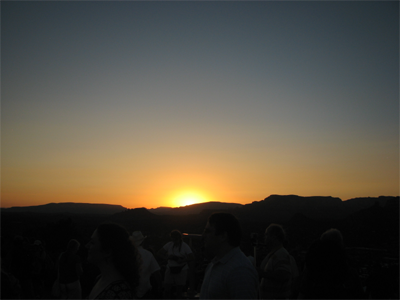 The vegetation in the South Rim is very distinct and includes specialties such as Piñon pine and Juniper trees which thrive in the desert. One feels completely dwarfed and subsumed looking at these geological formations, millions of years old that bear names such as the Buddha Peak, Vishnu Peak and the Zoroaster Peak. Driving along the Desert View Road further east we reach Lipan Point which is absolutely breathtaking, for here you get to see the widest expanse of the Colorado river and the Canyon itself opens wide and deep. No wonder millions of people have been mesmerized at the sight of this gigantic canyon. The final stop is at Desert View near the East entrance, with its majestic views of the sunset casting stunning shadows across the canyon. This is one of the finest parks in the country thanks to the foresight of President Theodore Roosevelt, who declared that the Grand Canyon is the one great place that every American should see.
The vegetation in the South Rim is very distinct and includes specialties such as Piñon pine and Juniper trees which thrive in the desert. One feels completely dwarfed and subsumed looking at these geological formations, millions of years old that bear names such as the Buddha Peak, Vishnu Peak and the Zoroaster Peak. Driving along the Desert View Road further east we reach Lipan Point which is absolutely breathtaking, for here you get to see the widest expanse of the Colorado river and the Canyon itself opens wide and deep. No wonder millions of people have been mesmerized at the sight of this gigantic canyon. The final stop is at Desert View near the East entrance, with its majestic views of the sunset casting stunning shadows across the canyon. This is one of the finest parks in the country thanks to the foresight of President Theodore Roosevelt, who declared that the Grand Canyon is the one great place that every American should see.
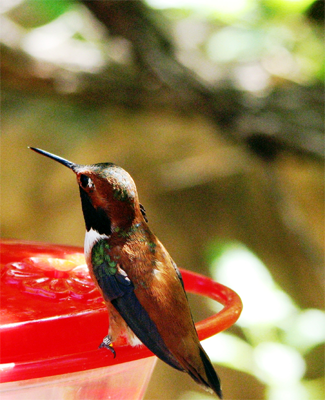 It was time to head to the mountains in Sierra Vista, south of Tucson to do some birding at the San Pedro Riparian and Ramsey Canyon. This unique ecosystem of hills and valleys coupled with desert flora and fauna attracts a wide variety of birds from Mexico and parts of Central America during Spring and Summer.
It was time to head to the mountains in Sierra Vista, south of Tucson to do some birding at the San Pedro Riparian and Ramsey Canyon. This unique ecosystem of hills and valleys coupled with desert flora and fauna attracts a wide variety of birds from Mexico and parts of Central America during Spring and Summer.
Species such as the Rufous hummingbird, Black chinned hummingbird, Broad billed hummingbird, Magnificent hummingbird, and Anna’s hummingbird were a treat to watch at the San Pedro House.
We also spotted several Blue grosbeaks, Brown-crested flycatcher, Gambail’s quail, Lesser goldfinches, Acorn woodpecker, Curve-billed thrasher, Western wood-pewee, and Sulfur-bellied flycatchers at the Ramsey Canyon Preserve nestled in the Huachuca Mountains.
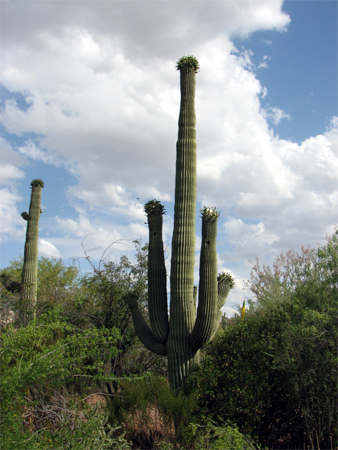 Back in Tucson, driving up the hills, the entire landscape was covered with tall Saguaro cacti that are anthropomorphic in nature and revered by the natives. This area is part of the Saguaro National Park, home to the Cactus Wren, the state bird of Arizona and many other critters, including the rattlesnake. Nearby the Arizona Sonora Desert Museum which is a combination of a Zoo, natural history museum and botanical garden, boasts of a unique biodiversity and also has a Hummingbird aviary, the largest of its kind in the nation. About 30 miles north of Tucson, is Biosphere 2, a fully sealed dome built in the 90s, that houses five of Earth’s biomes in which scientists confined for two years without any outside contact, carried out a wide variety of experiments. This engineering marvel is now used to address ongoing challenges in the field of agriculture, environment and climate change.
Back in Tucson, driving up the hills, the entire landscape was covered with tall Saguaro cacti that are anthropomorphic in nature and revered by the natives. This area is part of the Saguaro National Park, home to the Cactus Wren, the state bird of Arizona and many other critters, including the rattlesnake. Nearby the Arizona Sonora Desert Museum which is a combination of a Zoo, natural history museum and botanical garden, boasts of a unique biodiversity and also has a Hummingbird aviary, the largest of its kind in the nation. About 30 miles north of Tucson, is Biosphere 2, a fully sealed dome built in the 90s, that houses five of Earth’s biomes in which scientists confined for two years without any outside contact, carried out a wide variety of experiments. This engineering marvel is now used to address ongoing challenges in the field of agriculture, environment and climate change.
We headed back to Phoenix and stopped at Taliesin West where the master architect, Frank Lloyd retreated to during the harsh winters up north. The unique design of each and every structure here is a testament to how Frank Lloyd used materials that were available in the desert to create what he termed organic architecture. The museum also houses a school where students practice the art during the winter months. We then to downtown Phoenix to visit the Heard Museum which is a wonderful anthropological museum that deals with the history, art and culture of the American Indians. The amazing works of art crafted by the Native people of the Southwest are in display here and it is simply stunning to see such wonderful artwork created using simple tools from the past.
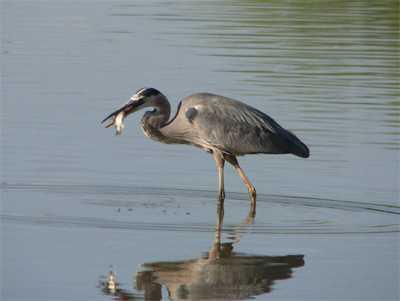 Nearby is the Desert Botanical Garden, which houses a phenomenal variety of desert flora and fauna. Gila woodpeckers, unique to Arizona, Cactus wrens and white tailed Doves abound here.
Nearby is the Desert Botanical Garden, which houses a phenomenal variety of desert flora and fauna. Gila woodpeckers, unique to Arizona, Cactus wrens and white tailed Doves abound here.
Gilbert Riparian Preserve, which is about 20 miles southeast of Phoenix, is an astounding oasis that attracts a wide variety of water-birds including Black Necked Stilts, Great Blue Herons, Avocets, Cormorants, Great Egrets, Common Moorhen, and Black crowned night herons. It was a delight to spot several Verdins, a bright yellow headed bird with chestnut sides that are endemic mainly in the Southwest. The trails here are well laid out and perfect for morning hikers and birders alike.
And then it was time to bid adieu to this wonderful sojourn in Arizona!
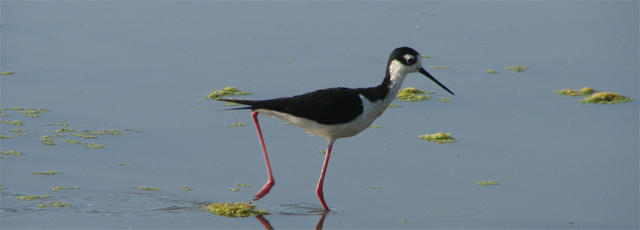
27-Jul-2010
More by : Subra Narayan

|
Wonderful description of one of the wonders of the world and gift of nature to the mankind -grateful to the almighty. Still we are not able to get into the secrets of the world creation, maintenance and destruction and will never be, only we can realise it. |

|
Took us there. The ornithologist takes over. |